|
The “she” in this case is our pup Ocean and the “it” is her favourite pastime – swimming off the boat. So, how does she swim off the boat? Well, the concept sounds simple (dog + boat + water = swimming) but, as most dog-owning sailors will tell you, it ain’t that easy. There are basically three elements: 1. Having a dog that loves to swim 2. Getting that dog from here (A) to there (B) 3. Most importantly, doing the whole thing in reverse. I say “most importantly” because this is also part of our Dog Overboard planning. Missing one of these elements means no swimming. Well, the people crew can still swim since we have a swim ladder attached to the back of the boat. For the pup, well, the ladder would be challenging. Not that it can’t be done – we know of two large dogs at our Club that manage their swim ladder quite well – but it is not the norm. For us, we cut our “get the dog swimming off the boat” teeth with our last boat (Chaika) and our last dog (Brecken). Another German Shepherd, Brecken was a swimmer extraordinaire. Her drive became our impetus for solving the dog swimming equation. And that solution turned out to be a combination of boat design and one awesome piece of gear to compliment it. The boat design? First, Wild Horses (and Chaika before her) has a “sugar scoop” transom. This is essentially a swim platform attached to the stern of the boat. Second, the boat has a walk-through transom i.e. part of our stern seat can be lowered to the cockpit sole. These allow Ocean to walk one level down from the cockpit and then easily jump into the water. The awesome piece of gear? It is a dog ramp appropriately called the “Load-A-Pup”. Genius. The Load-A-Pup was created for hunters to be able to get their dogs back into their runabout boats but it attaches to most swim ladders so that makes it a solution for just about anyone. It also checks a lot of our needs – it is aluminum (won’t corrode in salt water), lightweight (easy to handle) and foldable (it takes up almost zero space in our cockpit lockers when stored). There you have it! As soon as we get to an anchorage, we drop the dinghy that hangs from our stern arch, and get out the “Load-A-Pup”. And then we swim! This past summer, truly one for the record books in terms of heat and beautiful days, we swam pretty much three or four times a day, if not more. It is great exercise for Ocean, especially when you add in a one or two knot current! At the end of every day, she collapses into bed by nine o-clock. That is one tired pup. But, trust me, come morning she is ready to do it all over again!
Sometimes you are impacted not by what you do right but by what others do wrong. This was the case this week when a sudden, fierce storm whipped up at midnight in the anchorage where we had settled for the night. There were twelve boats in our little anchorage that night and when the winds sprang suddenly up to over 30 knots, six of them started to slide across the water. Their anchors had not held to the seabed. Four of those boats, a group rafted together with dock lines and sharing one anchor, were headed right for Wild Horses. We had a lot of luck on our side that night.
First, Mike was awake. The suddenness of the storm and the very heavy rains made him rush up to the cockpit and inspect things. He wanted to double check that our anchor was holding us securely (it was) and he wanted to scan our environment to see if the rest of the anchored boats were okay (they weren’t…yikes!). In the darkness he could see the four rafted boats being blown towards Wild Horses. Worse, the boats were dark, no lights shone from either inside or outside of the boats. This is a sure sign that all were fast asleep. No one on board was aware of their predicament and that their next stop was going to be the bow of Wild Horses. Mike immediately sounded the alarm by using the airhorn that we keep in the cockpit. Second, the wind shifted. The change in direction moved the boats away from Wild Horses and towards an open space in the anchorage. We were still not out of the woods though. Another wind shift could have caused the boats to be redirected towards any of the other anchored boats or even back in the direction of Wild Horses. The airhorn blasts continued, with urgency. By this time, other sailors had joined in the airhorn blasts and we finally saw interior lights illuminate on the drifting boats, and then deck lights were turned on. Whew. Those aboard were awake, on deck and attending to their anchors. This was also the case for the other two boats that had drifted across the anchorage that night. They turned on their engines, and began the process of re-setting their anchors. Hopefully this time so that they stayed put. This was a big reminder to us that an anchorage is a community, albeit a very transitory one. Although we function independently from boat to boat (i.e. doing our own thing), we are actually interdependent. It matters who is being safe, and who isn’t. If we each make sure that we are behaving safely, like taking care in our anchoring practices, then we will all, in our community, be safer for it. Hmmm, with covid-19, this may be the emerging theme for 2020. We really are in this together 😊. Being at anchor isn’t just swim, read and relax. Living on a boat is akin to running a town. We are the power company, water department, garbage & waste disposal, health department and all-things-maintenance. To keep it all in order, every day we track our usage of food, power, water and how much waste we are producing. Not enough fresh water? Too much garbage? Getting low on wine…😊? These are things that mean either a trip to shore via dinghy or a trip with Wild Horses to a service dock. Sounds easy? The tiny wrinkle that makes this challenging is that not every anchorage has access to the facilities you need. There isn’t a store around every corner. Garbage cans for household waste are somewhat rare (finding recycling bins is the biggest problem!). Not every marina has water and pump out facilities available. Oh, yeah, and the weather decides first where we anchor Wild Horses. An island may have garbage disposal but if it leaves us exposed to the strong southwest winds forecasted for the day, we can’t anchor there. You guessed it – we have to hang onto that garbage at least one more day. Planning is critical. Every day, usually several times a day actually, we take stock of where we are with stuff we need, and stuff we need to get rid of. So, what does our “critical stuff” dashboard consist of? The Boss of it all Weather – we watch it A LOT! The weather is our boss when we are on the water. We have several weather sources we go to regularly (including our own “just look at the sky” forecasts). Weather checks are done first thing in the morning, mid way through the day, last thing at night…and, yes, several times in between that.
Our solar array atop our bimini is 340 watts, more than enough to not only make up our daily consumption of amp hours but also to top up our cell phones, laptop, and to run our vacuum and coffee grinder (we’re not animals!). But, a few days of rain is a different story. When this happens, which isn’t often, we forgo TV for cards, open the fridge conservatively and use our mobile battery charges for our phones and laptop. Diesel / Gas – Diesel for Wild Horses and gas for the dinghy. We have one 212 litre diesel tank, which is plenty for a sailboat and lasts us a looooooong time (I mean, sailing is our gig). The dinghy gets lots of use so we are always checking the gas levels. We carry one extra jerry can of diesel, and two of gas.
Fresh Water Tanks – We have a 624 litre fresh water storage capacity on Wild Horses which lasts about three weeks. This is really good for a boat and our fresh water levels are not usually a cause for concern. Food – We normally provision for two weeks at a time. Wild Horses has a front-loading fridge (like a land fridge) and a top-loading freezer (opens like a treasure box 😉). All of this equals 7.7 cubic feet. Two weeks of food. Yes, it is sometimes a puzzle to get it all to fit. Mike knows to keep his distance until I declare that all the food is stored… Stuff that needs to be “down” in volume Waste. All things waste (Garbage, recycling, personal, dog personal). Except for personal waste, which goes in our holding tanks, we get rid of what we can, when we can. When those holding tanks say “full”, we head to a service dock to pump them out. When we do have to head to a service dock, it is usually only a fifteen minute detour and then we are back out on the water. At the end of the day All this checking sounds like a lot but keeping a daily eye on our dashboard and having great systems to keep it all in check, allows us to have more highs than lows at anchor! Several of our family and friends have asked us this question. Truly, the quick and accurate answer is “amazing”. But this doesn’t tell the whole story. We are only a few months into our retirement so our views of things will likely change as we settle in but, so far, we feel purposeful, challenged and content. We sculpt our days around projects, errands and playing. We have boat projects with varying priority, with new ones popping up all the time (a common saying in the sailing community is that “sailing is fixing your boat in exotic places”). We decide where our attention goes. Every day. This is the amazing part. What we don’t feel is chronic stress and anxiety, worry about work due yesterday or finding the sweet spot to resolving a problem – you know, that place that exists somewhere between a-good-way-to-get-things-done and money/time/politics constraints. This is the stuff that hangs in your head and gnaws at your gut, stealing your precious time even when you are supposed to be enjoying family moments or just relaxing. Remember relaxing? Yes, we still feel stress – for example, when something on the boat breaks (like our seacock did at launch or the weather takes an interesting turn like it did on our recent sail to Stella Bay. But this stress is the good kind. The kind that says “um, act or die”. So, you act…and then weirdly enough, the stress is gone. It is motivating. And it doesn’t hang around pointlessly. The other nice thing is no morning alarm waking us. We wake up when we wake up although, oddly enough, I still get up around 6:00 am most days 😊. We also don’t feel rushed or that the days are just not long enough to get everything done. On a boat, a schedule can get you into major trouble. A boat project will take the time it takes. Rushing it leads to shortcuts that leads to “ugh, I meant to replace that quick fix duct tape with electrical tape” moments. And trying to have a schedule for when you will be arriving or departing a harbour is what can get a sailor in some dicey fights with La Grande Dame, Mother Nature. Actually, she is our only boss these days and we gladly follow her lead. So, yes, retirement from the rat race has been a wonderful change for us. We are still challenging ourselves (Wild Horses keeps us on our toes!) while also exploring new places and inspirations. And taking time to appreciate all of our moments – big and small.
Days are longer when you savour those moments and this has been a blessing that early retirement has given us. Although we have access to all of Lake Ontario, more often than not, we have sailed Wild Horses in the Thousand Islands. There are some pretty sound reasons for this – it is close (thirty minutes from our club), it is jam-packed full of beautiful anchorages and there is a large patch of beautiful sailing grounds called the Forty Acres. This is our neighbourhood and we have yet to get bored by what it has to offer. But we also have this crazy “let’s explore” fascination. I mean, truly that is what got us wanting to live on a boat in the first place! With wanderlust in our veins, we decided to head west to Amherst Island and then onto Waupoos on Picton Island. By boat, it is about 6 to 7 hours to Waupoos from our home base at Trident Yacht Club. Our plan was to start the journey on July 30, spend a few days at Stella Bay on Amherst Island and then move onto Waupoos, arriving there on August 2nd or 3rd. The day we left Trident, the weather was forecasted to be a fresh, steady wind with some storm clouds developing late afternoon but passing north of our intended route. Great! The trip from Trident Yacht Club to Kingston was easy but once we got in front of Kingston, the waves from the Lower Gap really started to build. Wild Horses was a rocking horse – riding up the waves and then slamming down on the back side. A bit uncomfortable but she managed it well. And, as forecasted, storm clouds developed in front of us but slid north. Until they didn’t. An isolated bank of storm clouds decided to pass directly over Amherst Island, just as we were readying our approach into Stella Bay on the north side of the island. Rain started to hit our windshield and we could hear small growls of thunder. Yikes! The storm was tracking straight over the island so we altered course away from the island, away from the storm. We waited it out for an hour and then, with a clear sky above, entered the safe harbour of Stella Bay. With the anchor down, we took a deep breath and appreciated the calm anchorage. It had been a rocky and stormy journey that kept us on our toes. Even stronger weather was forecasted in a few days so, with regret, we altered our float plan. One of the “rules” on Wild Horses is to never have a rigid schedule. That means weather or boat issues always overrides intended plans. We returned back to Trident Yacht Club two days later. The next day saw winds of up to 40 knots and heavy rains for several hours and through the night. We were happy to be tied to a dock! Just a quick note on our battery situation. As it turned out, the batteries for Wild Horses had been wired oddly. As mentioned previously, we have three battery switches which we believed were for the start battery, the house batteries (448 amp hours) and our bow thruster. Not so. Mike and our trusty boat mechanic worked through the wiring and did lots of testing (I could hear a lot of “is it on now?” coming from the battery compartment) and the final verdict was a bit of a surprise. Yes, we have three positive battery switches but only two battery banks. Weird. Usually a switch controls a bank. Not so for Wild Horses. Her third battery switch was actually dedicated to our DC-AC inverter. Again, weird. At the end of the day, Mike and our trusty boat mechanic did some re-wiring to make full use of our house batteries. Yes! Now we can welcome multiple days at anchor, rain or shine, knowing that we have enough battery power for Wild Horses to be a comfortable home on the water. |
AuthorVictoria is a hiker, dog-lover, blog writer and planner extraordinaire. Oh, yeah and she is kind of fond of living on a boat. Categories
All
Archives
June 2024
|
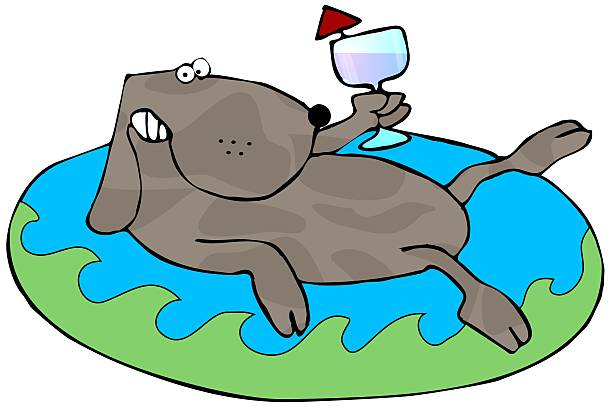
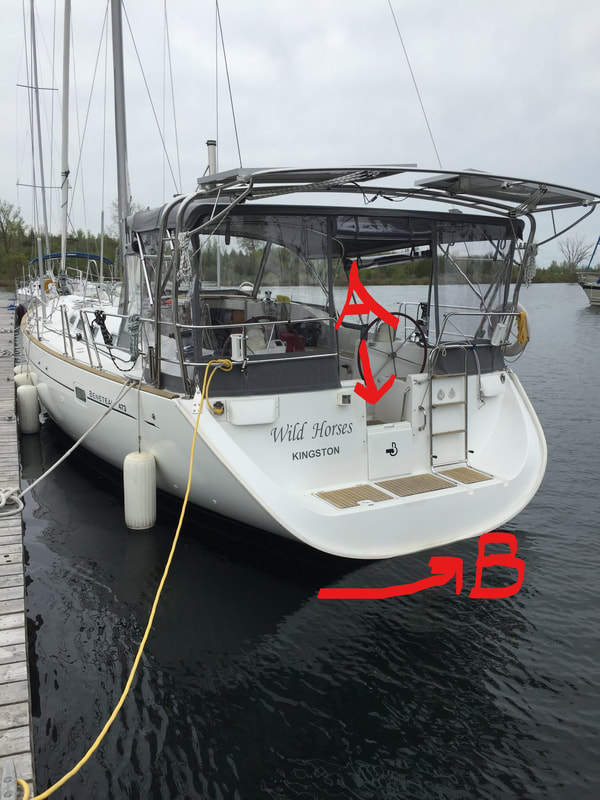
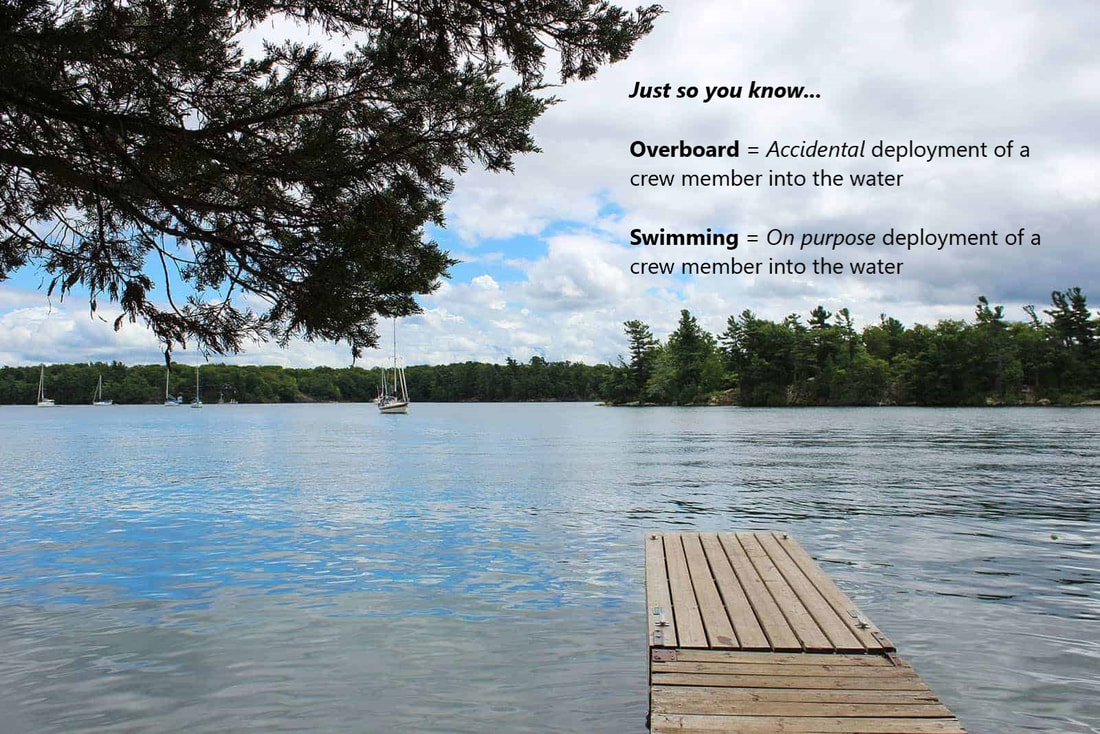
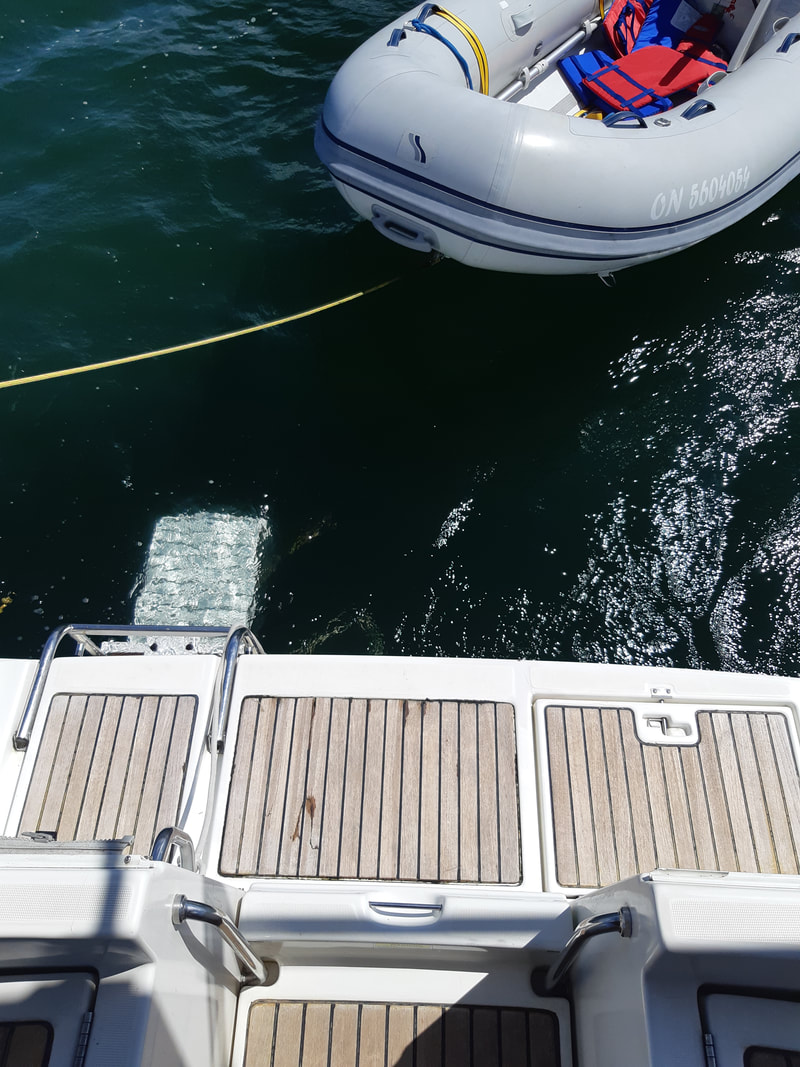
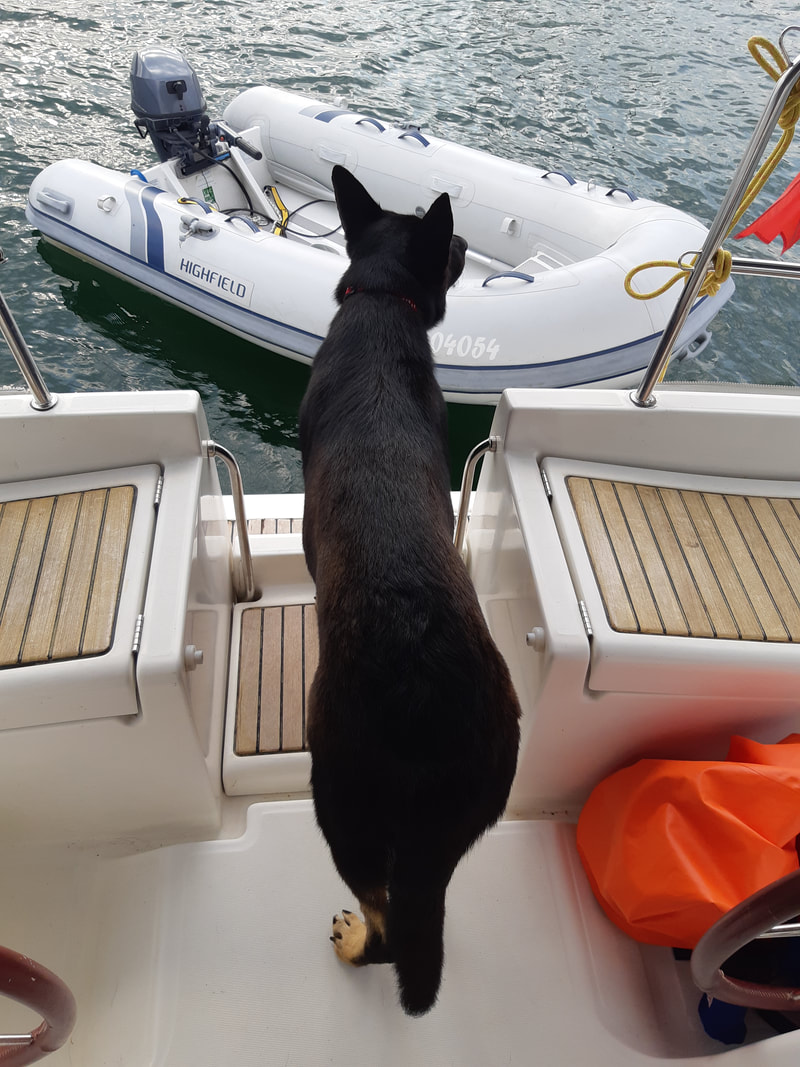
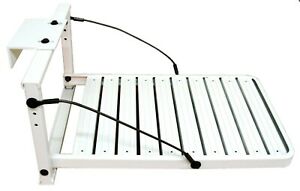
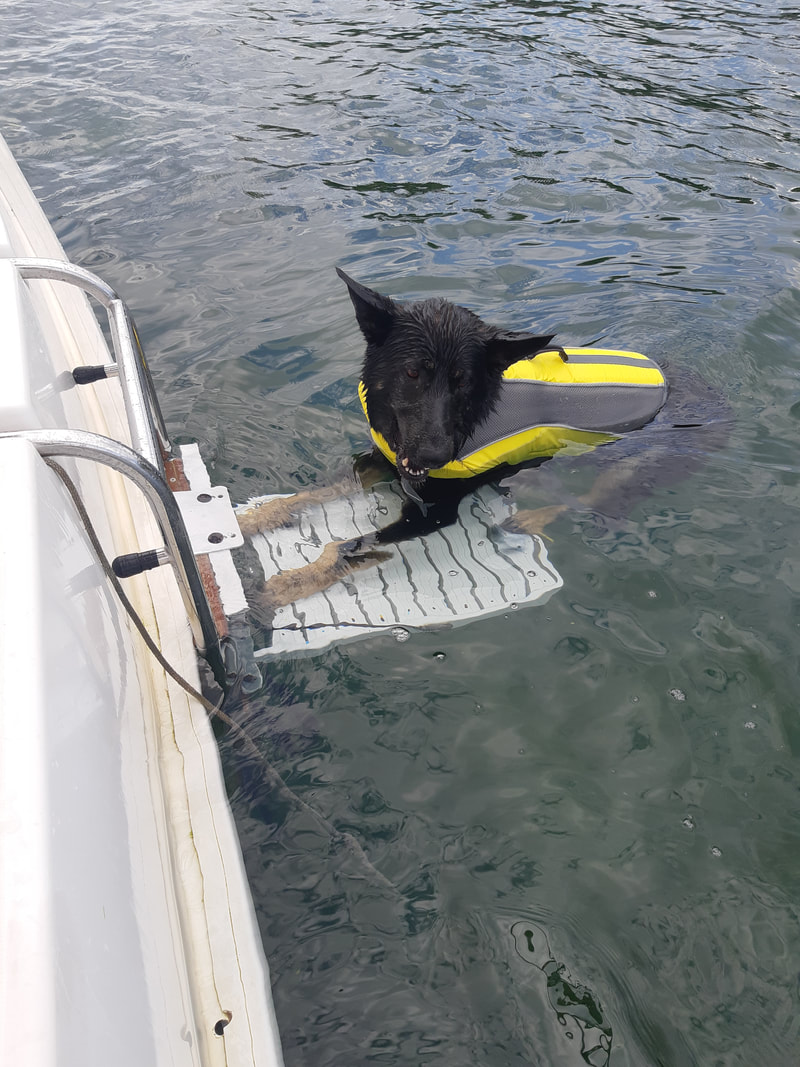
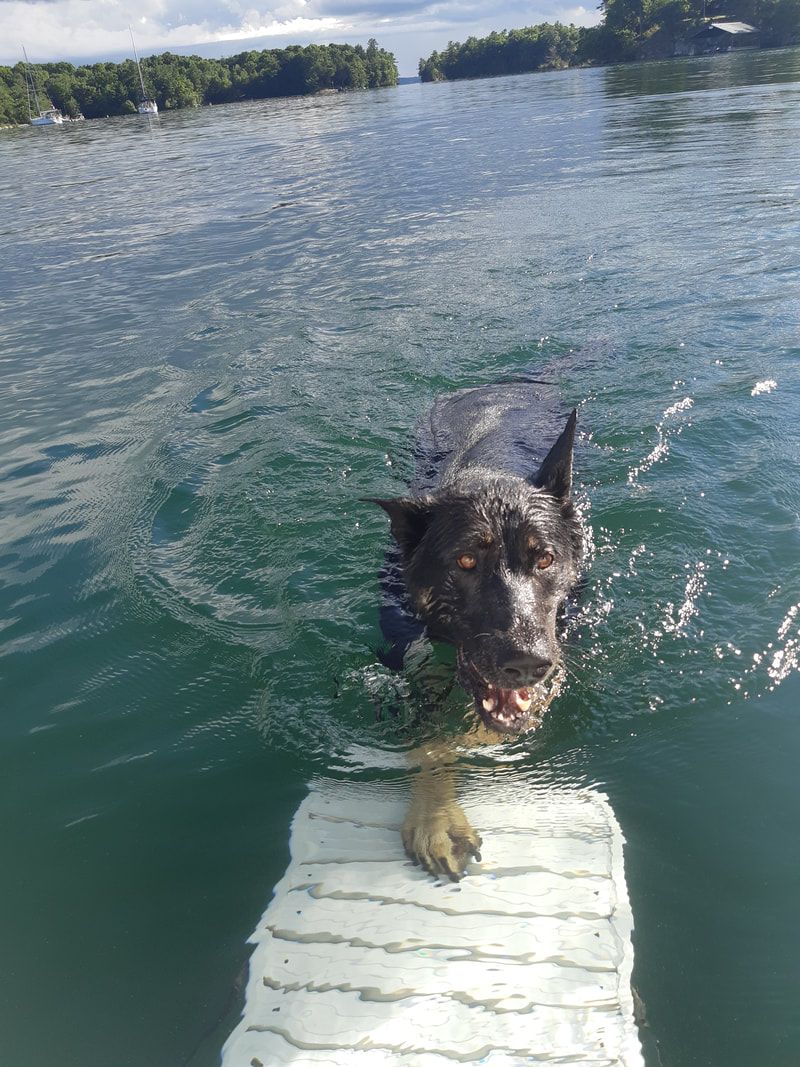
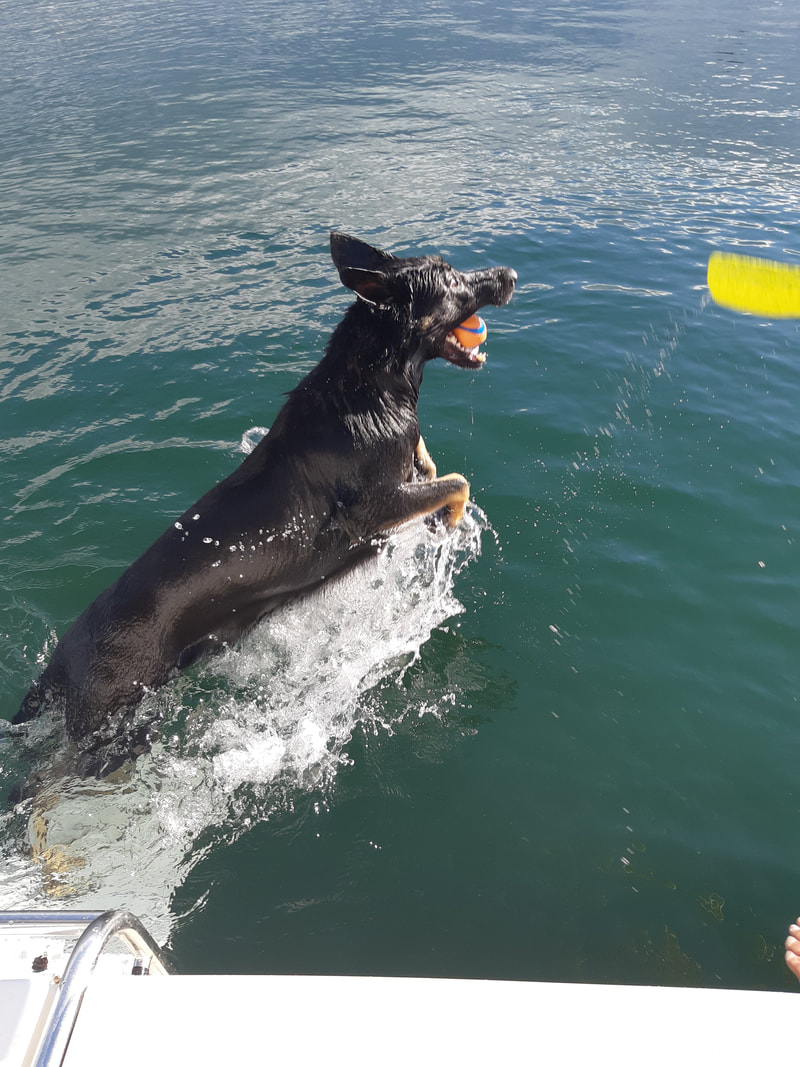
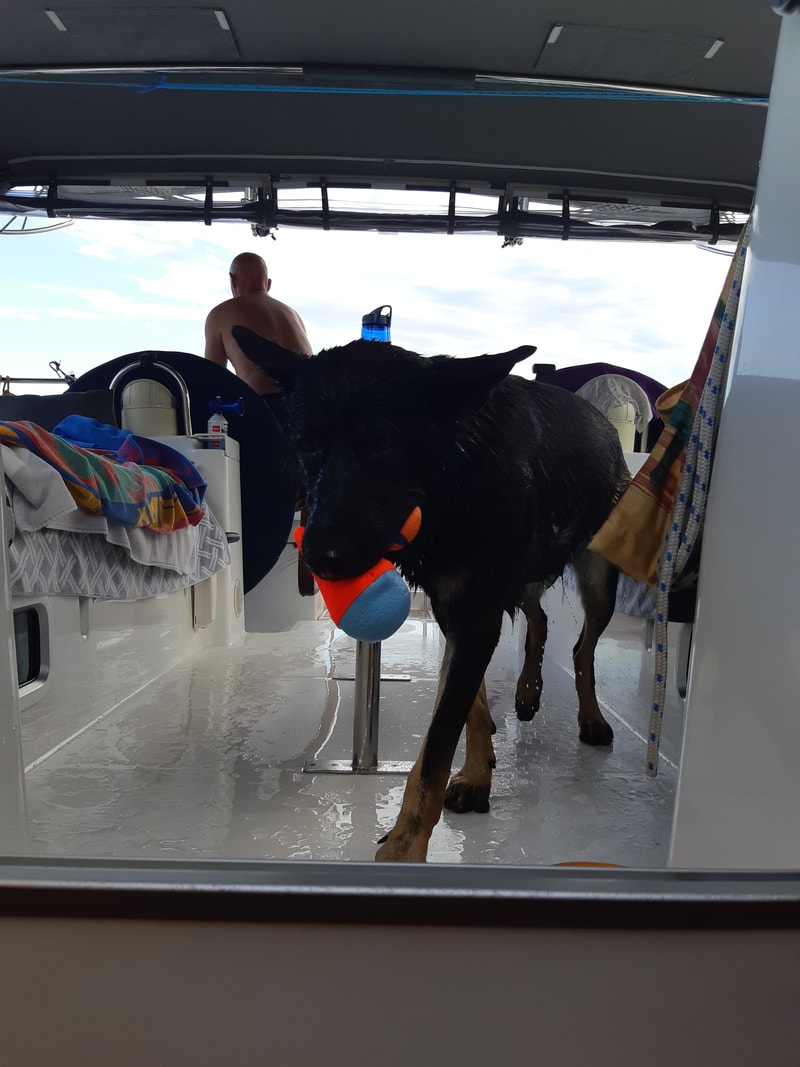
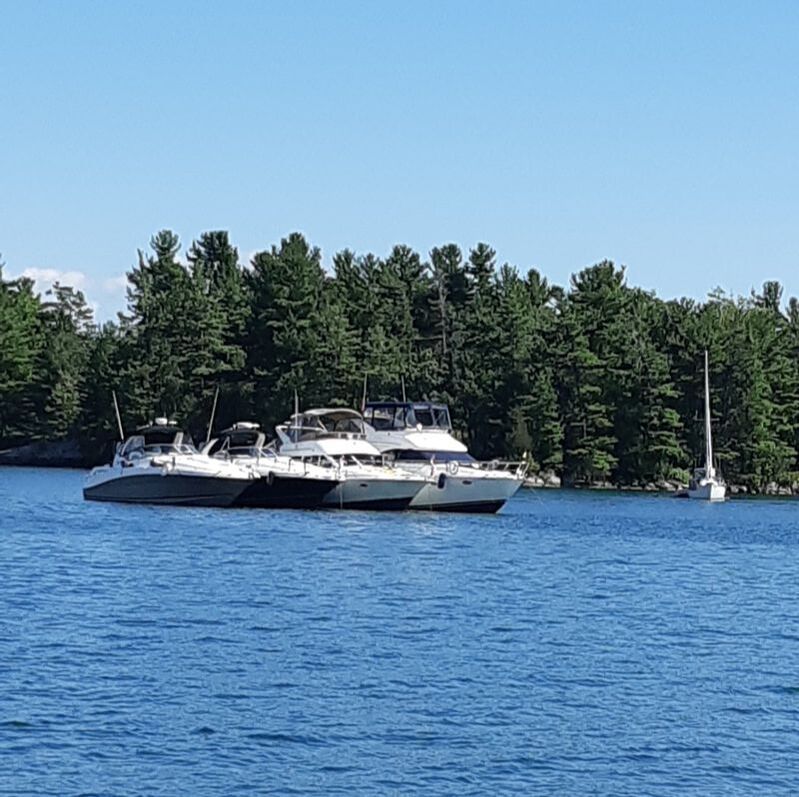
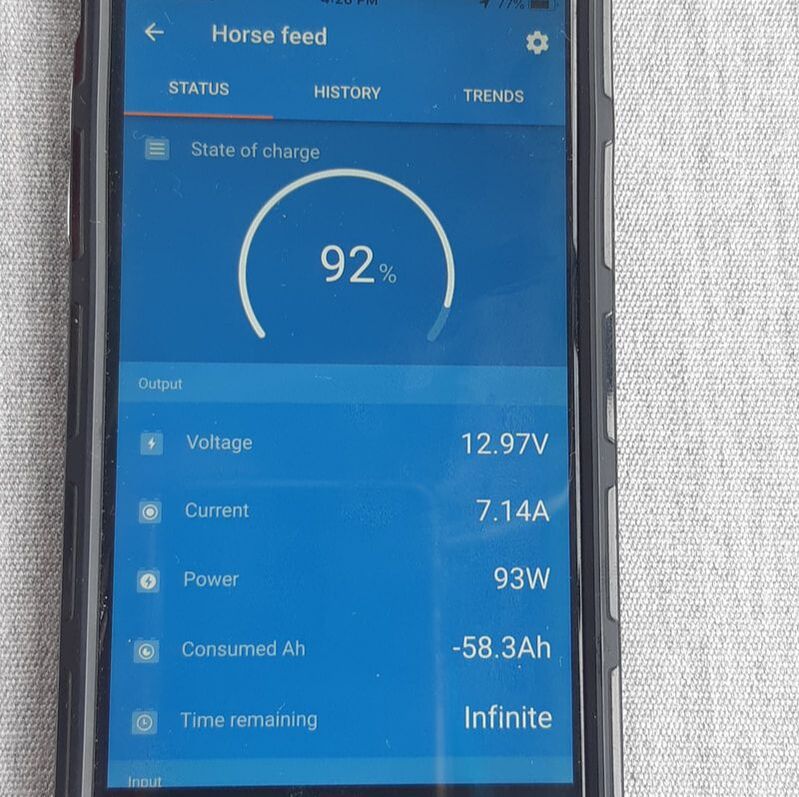
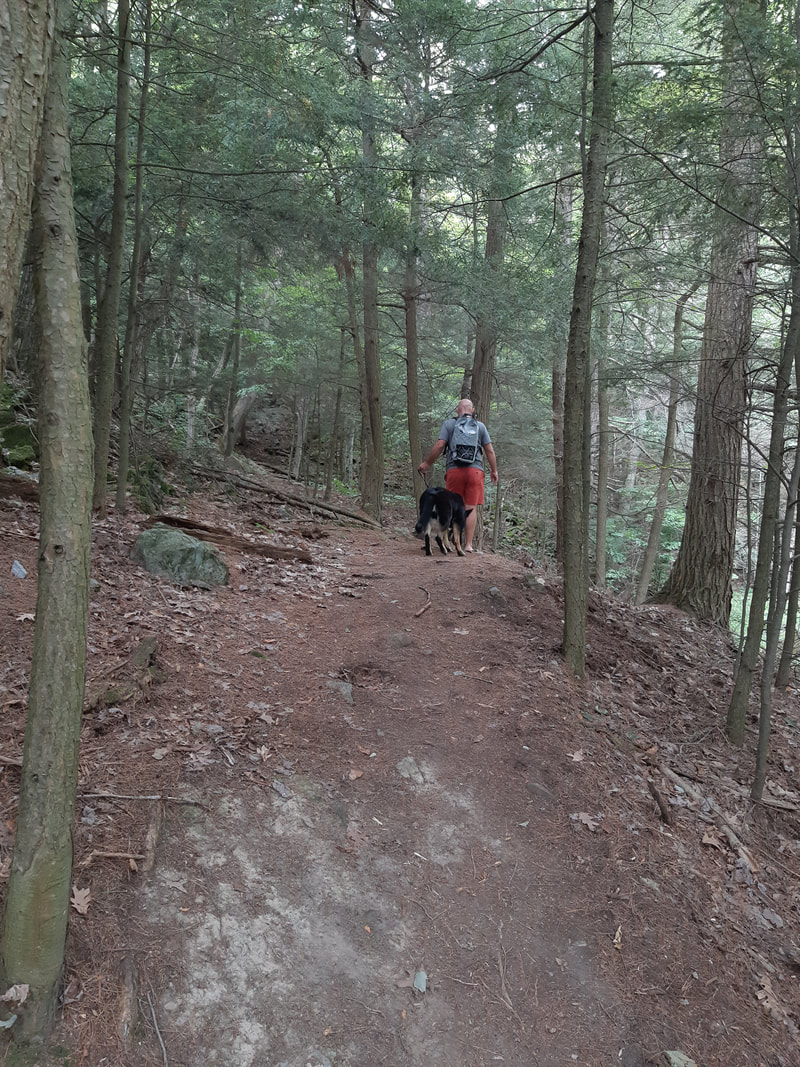
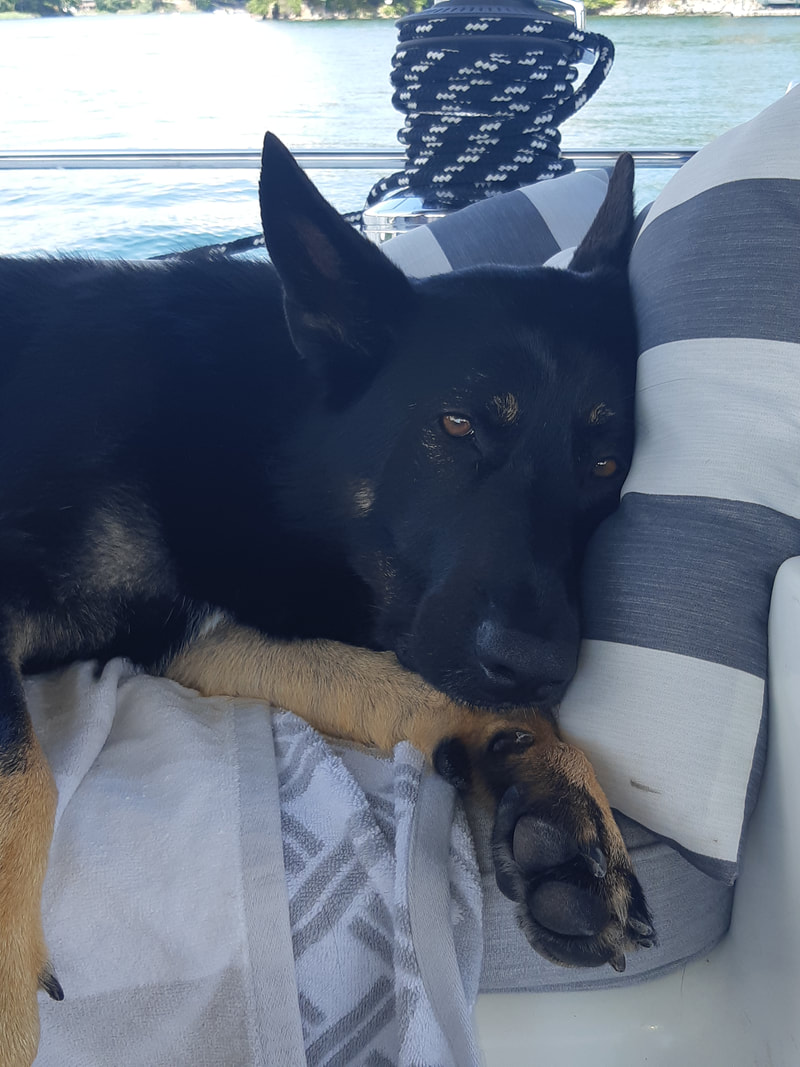
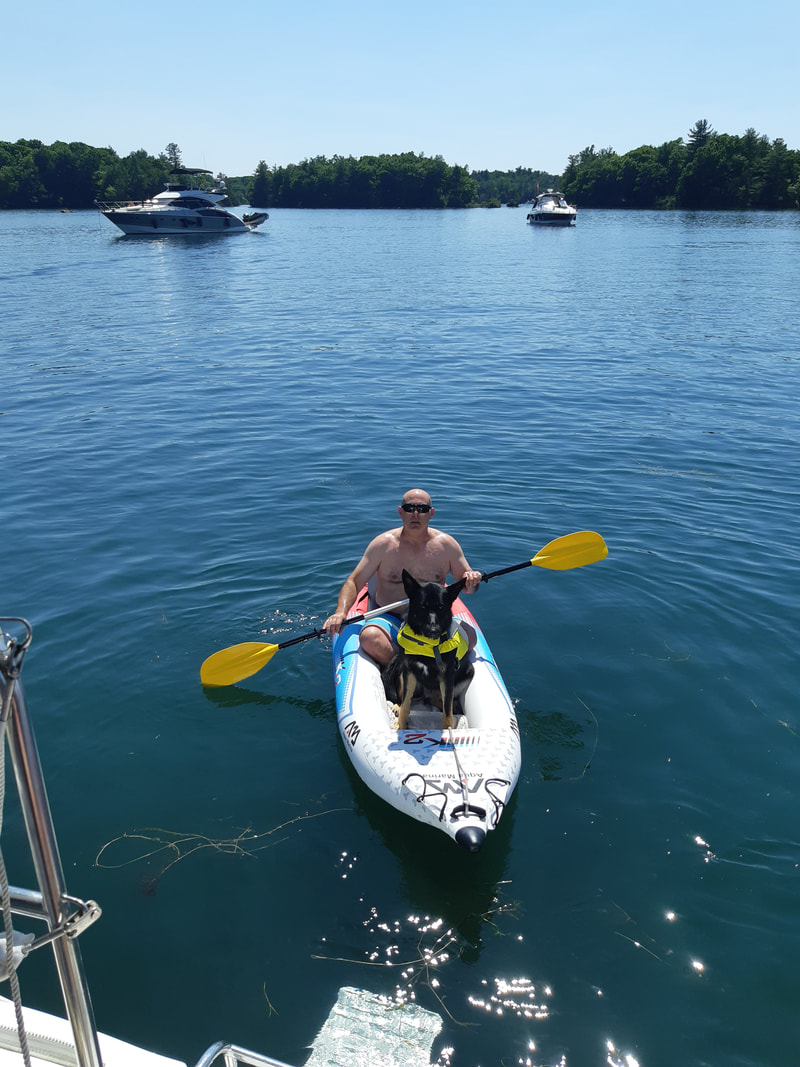
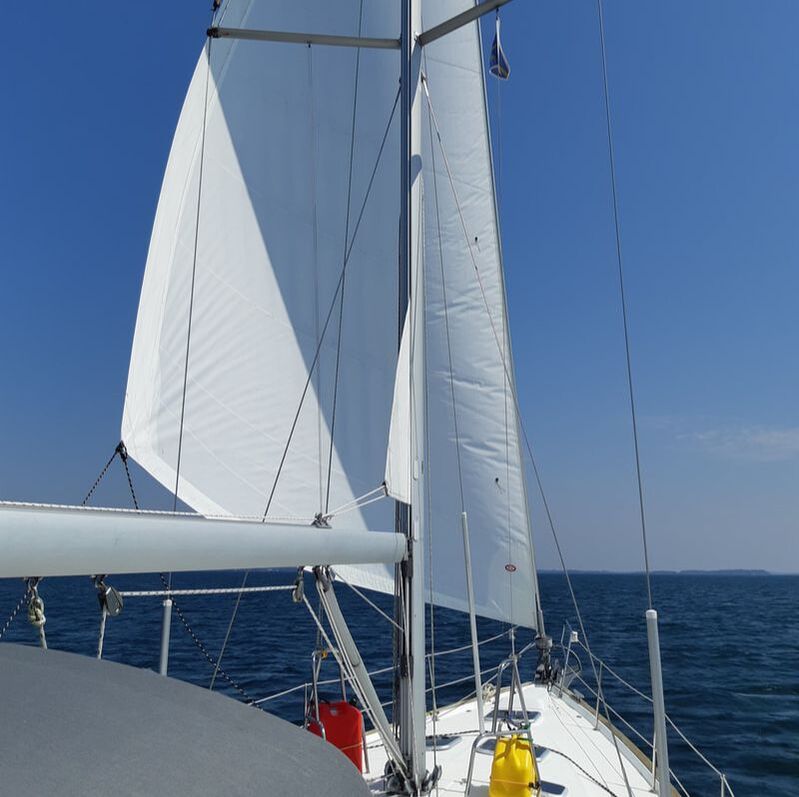
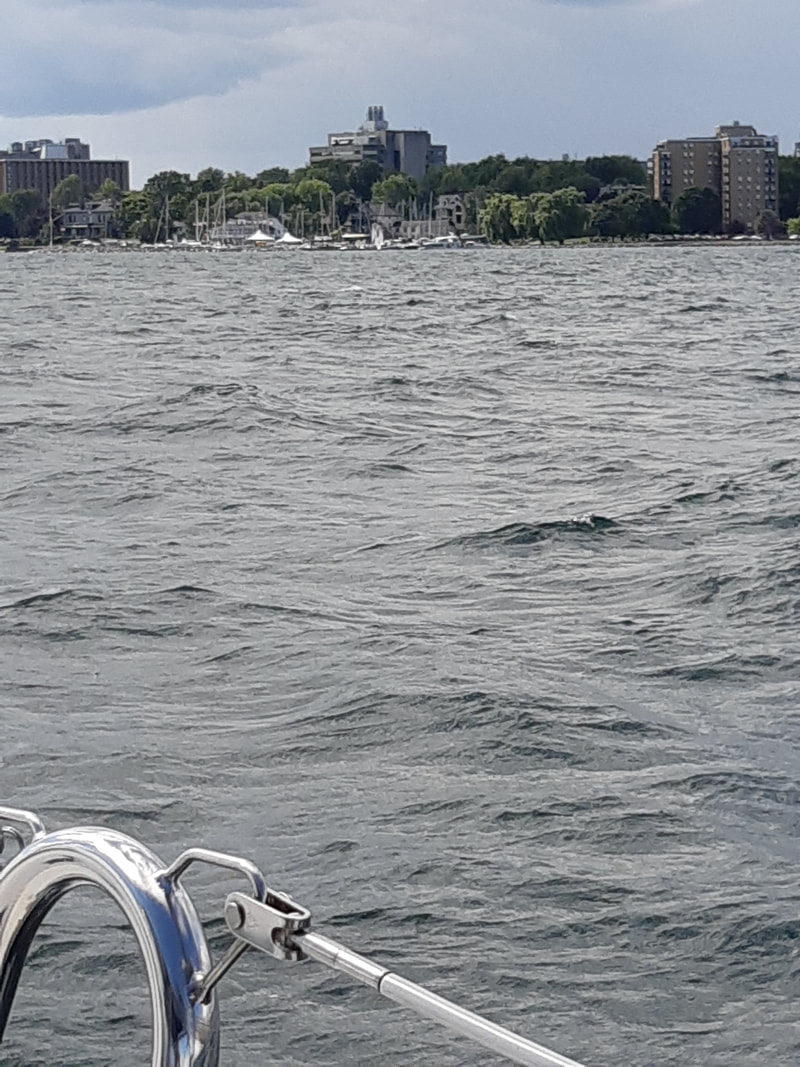
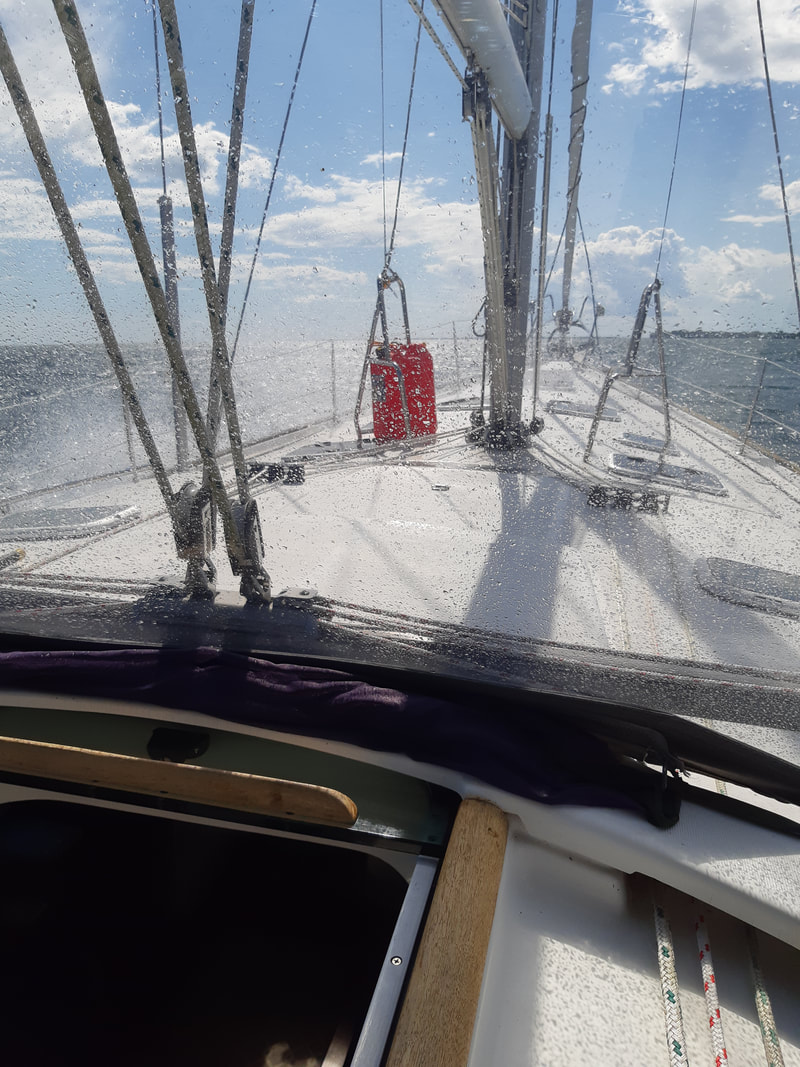
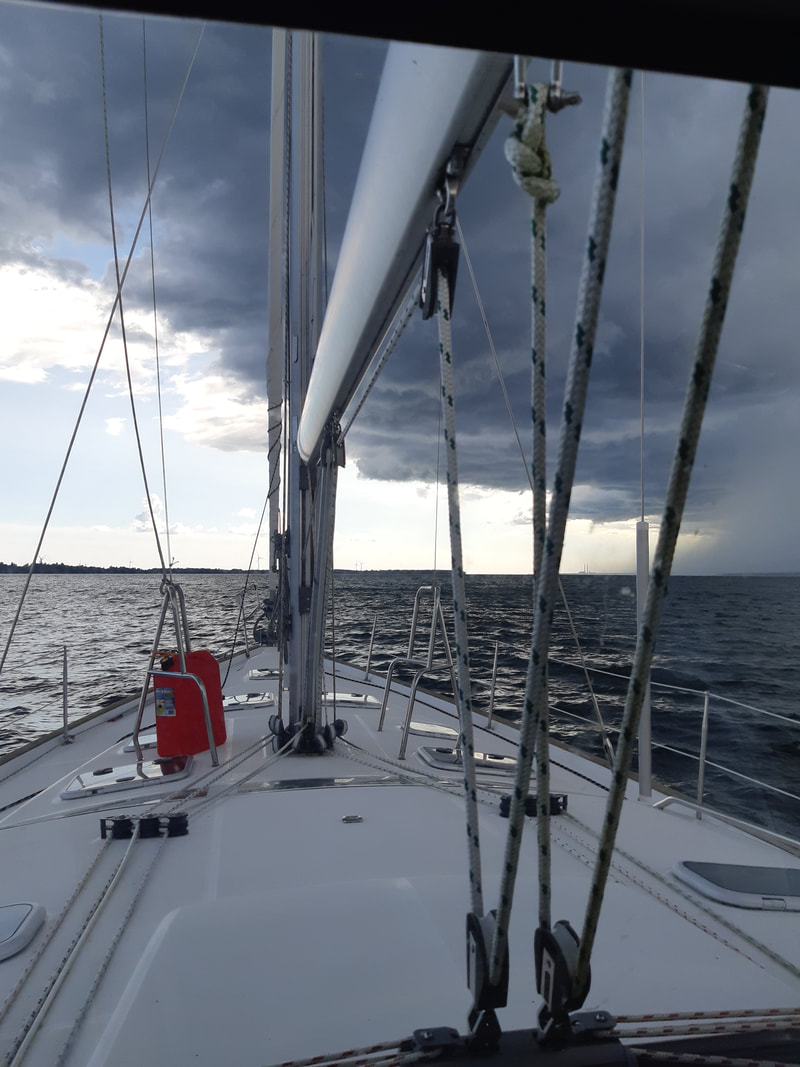
 RSS Feed
RSS Feed
